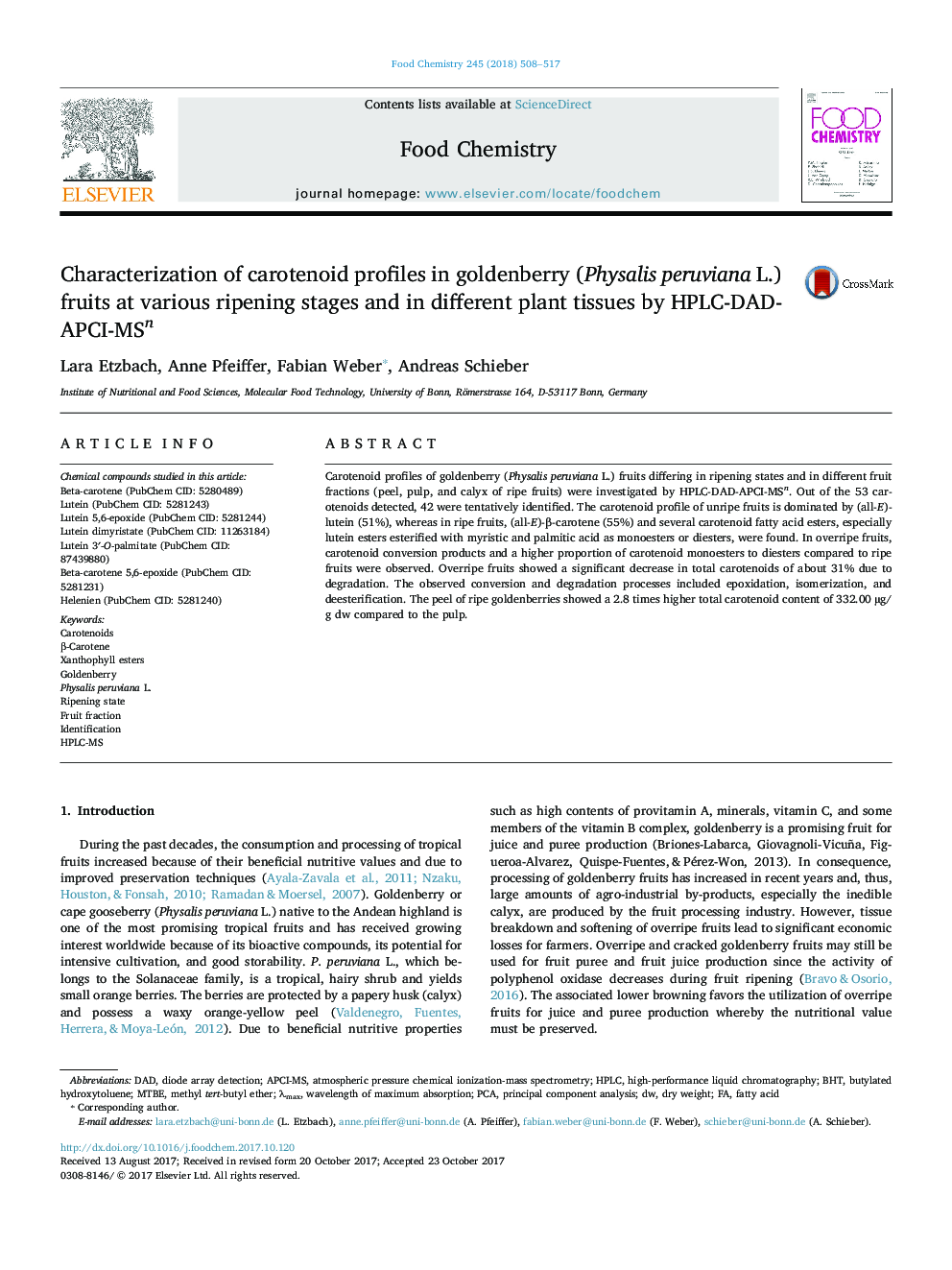| Article ID | Journal | Published Year | Pages | File Type |
|---|---|---|---|---|
| 7586406 | Food Chemistry | 2018 | 10 Pages |
Abstract
Carotenoid profiles of goldenberry (Physalis peruviana L.) fruits differing in ripening states and in different fruit fractions (peel, pulp, and calyx of ripe fruits) were investigated by HPLC-DAD-APCI-MSn. Out of the 53 carotenoids detected, 42 were tentatively identified. The carotenoid profile of unripe fruits is dominated by (all-E)-lutein (51%), whereas in ripe fruits, (all-E)-β-carotene (55%) and several carotenoid fatty acid esters, especially lutein esters esterified with myristic and palmitic acid as monoesters or diesters, were found. In overripe fruits, carotenoid conversion products and a higher proportion of carotenoid monoesters to diesters compared to ripe fruits were observed. Overripe fruits showed a significant decrease in total carotenoids of about 31% due to degradation. The observed conversion and degradation processes included epoxidation, isomerization, and deesterification. The peel of ripe goldenberries showed a 2.8 times higher total carotenoid content of 332.00â¯Âµg/g dw compared to the pulp.
Keywords
HPLC-MSXanthophyll estersAPCI-MSGoldenberryλmaxMTBEPhysalis peruviana L.DADBHTPCAβ-caroteneFatty acidBeta-Carotene (PubChem CID: 5280489)Principal component analysisdiode array detectionIdentificationLutein (PubChem CID: 5281243)methyl tert-Butyl etherbutylated hydroxytoluenedry weightCarotenoidshigh-performance liquid chromatographyHPLC
Related Topics
Physical Sciences and Engineering
Chemistry
Analytical Chemistry
Authors
Lara Etzbach, Anne Pfeiffer, Fabian Weber, Andreas Schieber,
